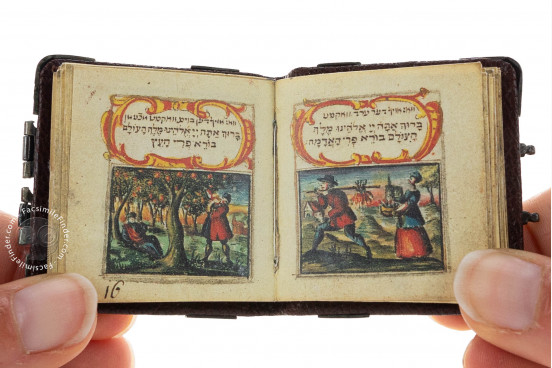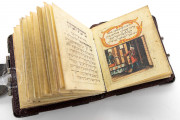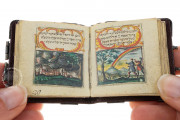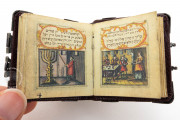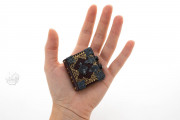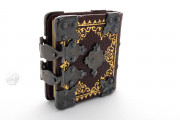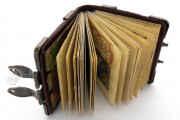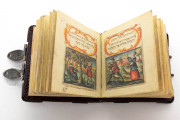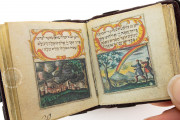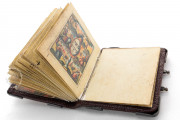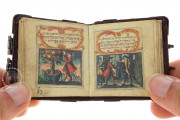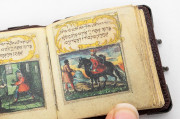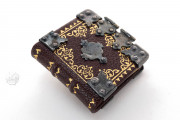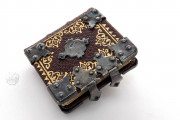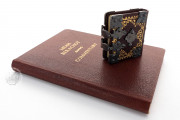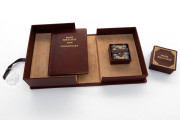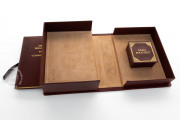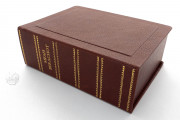One Hundred Blessings (Me'ah Berachot) is an extraordinary eighteenth-century Hebrew and Yiddish miniature prayer book, handwritten and illuminated in central Europe. It may have been commissioned as a wedding gift for a Jewish woman. It contains daily and occasional blessings and prayers for special events, including three specific to women's mitzvot (divine instructions). Twenty-nine miniatures illustrate the text, contained in ornamental cartouches. Although created during the age of print, this manuscript reflects a revival of medieval Hebrew illumination and offers insight into the spiritual and domestic life of modern Jewish women.
Currently, this manuscript resides in a private collection in New York, representing a significant artifact of Jewish religious art and practice.
Liturgical Significance
According to Jewish tradition, the devout are encouraged to recite blessings on at least one hundred occasions throughout the day—a practice reflected in the manuscript's title, Me'ah Berachot (One Hundred Blessings). This comprehensive compendium organizes blessings according to temporal and circumstantial contexts, encompassing: Morning prayers, grace after meals (Birkat Hamazon), bedtime prayers (Qriat Sh'ema), travelers' invocations, situational blessings for witnessing natural phenomena (e.g., beholding a beautiful tree, hearing thunder), and blessings for life events (e.g., wearing new garments).
Gender-Specific Significance
The manuscript's inclusion of three blessings explicitly associated with women's religious obligations (mitzvoth nashim)—concerning breadmaking (challah), ritual immersion (mikveh), and kindling Sabbath lights (hadlakat nerot)—strongly suggests it was commissioned as a gift for a woman. Scholarly consensus indicates such an exquisite prayer book may have been presented to a bride as a wedding gift, subsequently becoming a cherished heirloom passed through generations of her family.
Artistic and Cultural Value
Beyond its textual content, the manuscript constitutes a remarkable cultural repository. Its features include: An ornately illuminated title page, twenty-nine miniature illustrated panels depicting activities corresponding to specific blessings, decorative cartouches containing blessing texts in Hebrew, with accompanying Yiddish instructions in a more cursive script, and detailed illustrations of quotidian Jewish life, including Sabbath observances, familial meals, gardening, clothing rituals, ritual bathing, and contemporary medical practices such as bloodletting.
Despite the manuscript's diminutive dimensions, the calligraphy exhibits exceptional clarity, ensuring legibility of all textual elements.
Historical Significance
This manuscript represents a notable example of the eighteenth-century revival of Hebrew manuscript illumination. In an era when print technology had long been established, handwritten and illustrated religious texts were consciously created to convey a sense of reverence, luxury, and ritual significance reminiscent of medieval manuscript traditions. The One Hundred Blessings thus embodies both religious continuity and artistic renaissance in Jewish material culture.
We have 1 facsimile edition of the manuscript "Me'ah Berachot: One Hundred Blessings": Meah Berachot facsimile edition, published by Facsimile Editions Ltd., 1994
Request Info / Price
